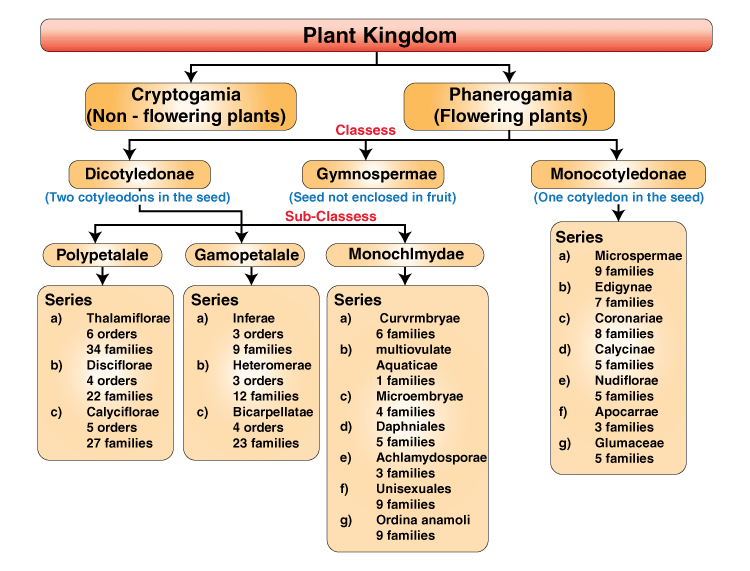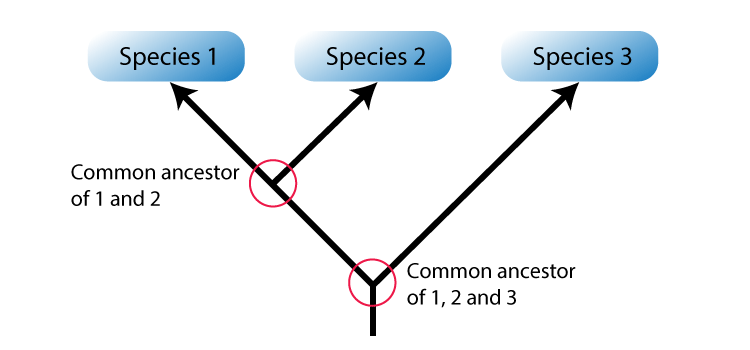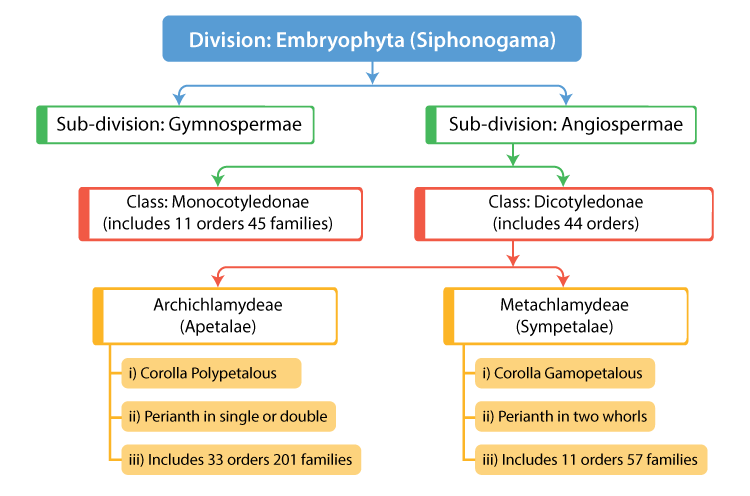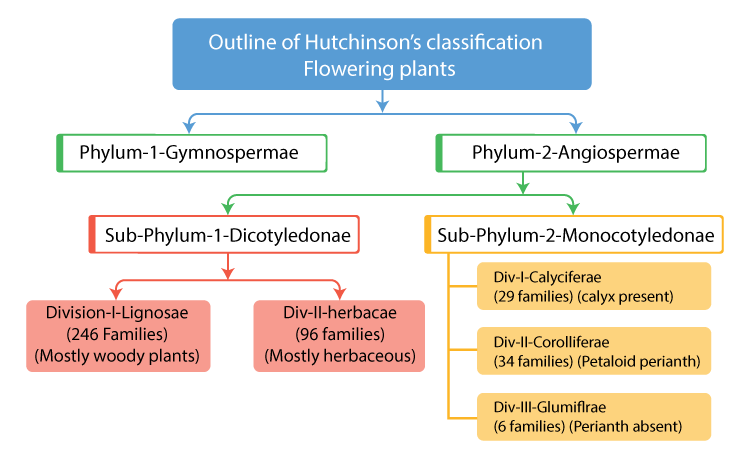Table of Contents
- Taxonomy and Systematics
- List of Systems of Plant Taxonomy
- Modern Taxonomic advancements
- Importance of Plant Taxonomy
- Frequently Asked Questions
Download the Complete Guide to NEET UG Prep
Download Now
The term “taxonomy” originates from two words, “taxis” meaning arrangement and “nomos” meaning laws. Plant taxonomy deals with the classification of plants according to certain set rules. The term taxonomy was coined by the Swiss botanist A. P. de Candolle in his book “Théorie élémentaire de la botanique”.
The basis of contemporary taxonomy is the similarity of organisms, which reflects descent from a recent common ancestor. As a result, two plants are taxonomically related if they share characteristics like the ability to store carbohydrates in a specific sort of molecule.
Plant taxonomy can be defined as the branch of botany which deals with characterisation, identification, classification and nomenclature of plants based on their similarities and differences.
The goals of plant taxonomy are:
- Identification: identify the unknown species based on its characteristics and by comparing with already existing species. Identification is the process of recognising an organism’s essential characteristics.
- Characterisation: to describe all the characteristics of the newly identified species
- Classification: placing and arranging the known species into different groups or taxa according to similarities and dissimilarities
- Nomenclature: giving the scientific name according to the convention
Taxonomy and Systematics
The word systematics comes from the word ‘systema’, meaning the systematic arrangement of the organisms. It takes into consideration the evolutionary relationship of the organisms. Plant systematics deals with interrelation between plants and their evolutionary descent. Systematics studies biological diversity and organises the information into a classification.
Organisms are classified on the basis of similarities, closeness or relationship between them. It shows the phylogenetic taxonomy relationship between different organisms and shows their line of descent. The similarities among individuals show that they might have developed from the common ancestor. It shows the evolutionary pathway of modern living organisms. Closely related organisms are included in a group, which share a common gene pool.
Organisms are categorised into different taxonomic categories according to the similarities and specific features. The different taxonomic categories in their hierarchical order are:
- Kingdom
- Phylum
- Class
- Order
- Family
- Genus
- Species
The number of common characteristics decreases as we move from species to the kingdom, where species having fundamental similarities and organisms in the same kingdom having least common features.
List of Systems of Plant Taxonomy
The earliest system of classification considered only a few vegetative characters. Modern taxonomic studies have been more elaborate and taken into consideration various morphological, cellular and molecular characteristics, e.g. cellular and reproductive features, mode of nutrition, habitat, evolutionary relationships, etc. along with morphological features.
There are three main types of systems for plant classification. Here is the list of systems of plant taxonomy:
- Artificial system of Classification
- Natural system of Classification
- Phylogenetic system of Classification
1. Artificial systems: Artificial systems were the earliest systems, which attempted to classify organisms based on a few superficial characters.
These were important in the history of biological classification as this was a novel attempt to organise living organisms. The demerit was that it didn’t consider morphological details and the evolutionary relationship. They gave equal importance to vegetative and sexual characters but it is not true. Vegetative characters are greatly influenced by the environment. As a result, the closely related species were kept apart.
Aristotle classified plants more than 2000 years ago on the basis of simple morphological characters into herb, shrub and trees.
Theophrastus in his book “Historia Plantarum or Enquiry into plants” attempted to arrange plants in various groups based on how plants reproduce and its uses. He is called “Father of Botany”.
Carl Linnaeus is known as the “Father of Modern Taxonomy”. In his book “Systema Naturae” (1735), he gave the hierarchical system of classification of the natural world into the plant kingdom, the animal kingdom and mineral kingdom.
He understood the importance of floral characters and classified plants based on the number of stamens present in them. It is also known as the sexual system of classification.
Linnaeus kept on adding new work to his publications. In “Species Plantarum” (1753), he gave a brief description of all the species known to him. He described around 7,300 plant species in it. He divided the plant kingdom into 24 classes based on the structure, union, length and the number of stamens. E.g. Monoandria (1 stamen), Diandria (2 stamens), Polyandria (more than 12 stamens), Monoadelphia (stamens united in a single bundle), Monoecia, Dioecia, Polygamia (polygamous plants), Cryptogamia (flowerless plants), etc.
He gave the Binomial nomenclature system. In “Philosophia Botanica”, he had given rules for naming every species. It is called binomial because each name has two components, genus name and species name, e.g. Solanum melongena (brinjal), Solanum tuberosum (potato) having the same genus but different species name.
2. Natural systems: In this system of classification, more characters were considered while classifying. It was based on the natural similarities of vegetative and floral characters among the organisms. It took into consideration various external and internal features like the anatomy of a cell, types of embryo and phytochemistry.
Bentham and Hooker system of classification was the most important natural system of classification of flowering plants. They classified plants into Cryptogams (non-flowering plants) and Phanerogams (flowering plants).
In the Bentham and Hooker classification system, 97,205 species of seed plants were classified into 7569 genera and 202 families. The flowering plants were further classified into three classes namely Dicotyledon, Gymnosperm and Monocotyledon.
The Bentham and Hooker system of classification was published in the book “Genera Plantarum” in three issues over the years 1862 to 1883.

It helped to determine relationships between the various groups of plants but failed to identify phylogenetic relationships among different groups of plants. It wrongly placed gymnosperms between monocotyledons and dicotyledons.
3. The Phylogenetic system of Classification: This system is based on evolutionary sequence and genetic relationship. The phylogenetic system of classification was developed after the publication of Darwin’s theory of evolution. Apart from the morphological characteristics found from fossil records, genetic constituents were also considered. It has been widely accepted by biologists all over the world. According to this system, all the organisms belonging to the same taxa originated from the common ancestor.

Various scientists namely Engler and Prantl, Hutchinson, Takhtajan, Cronquist, Rolf Dahlgren and Robert F Thorne contributed to the phylogenetic system of classification.
The two main phylogenetic systems of classification are:
- Engler and Prantl system of classification: In this type of phylogenetic system of classification, floral characters like single whorl or no perianth, unisexual flowers pollinated by wind were considered primitive characters as compared to two whorls in the perianth and bisexual flowers pollinated by insects. They arranged plants based on the increasing complexity of the flower morphology.

- The plant kingdom was divided into 13 divisions:
- 11 are Thallophytes
- 12th Embryophyta Asiphonogama, i.e. plants having embryos but pollen tubes are absent (bryophytes and pteridophytes)
- 13th Embryophyta Siphonogama, i.e. plants with embryo and pollen tubes (seed plants)
- Hutchinson’s classification: John Hutchinson, a British botanist gave the phylogenetic system of classification in his book named “The Families of Flowering Plants” in two volumes in 1926 and 1934. In his classification, Hutchinson divided angiosperms into monocotyledons and dicotyledons.
- Dicotyledons were further divided into two divisions, namely, Lignosae (woody plants) and Herbaoae (herbaceous plants)
- Monocots were divided into 3 divisions on the basis of flower morphology, namely, Calyciflerae (calyx present), Corolliferae (petaloid perianth) and Glumiflorae (perianth absent)

Modern Taxonomic advancements
With the advent of molecular biology, many techniques to identify genetic materials have been developed. This has equipped us to compare individuals at different taxonomic levels and resolve the difficulties of classifying them even if there is no fossil evidence.
- Numerical taxonomy: It is done by using computers and all the observable characters are taken into consideration. Each character is assigned with a code and a number. Hundreds of characters can be considered together and given equal importance.
- Cytotaxonomy: it utilises cytological information like chromosome number, shape size, etc. to understand the taxonomy.
- Chemotaxonomy: Use of chemical constituents of plants for taxonomic studies is known as chemotaxonomy. Proteins, amino acids, nucleic acids and peptides, starch grains, wax, fat, oil, phenols are studied in chemotaxonomy.
Importance of Plant Taxonomy
- It gives a detailed overview of various morphological and anatomical structures of a plant species
- It organises all the information of plants into an orderly fashion
- It indicates the phylogenetic relationship between species and its ancestry
- Plant taxonomy enables to identify any unknown species and its place in the classification by comparing with known species
- Analysis of genetic constituents can be done on the basis of systematics
- It is used to scientifically name any species, which helps in the uniformity of the name around the world and avoids confusion
- It helps to understand the biodiversity present at a place
- It helps in recording all the living species known until now
- Taxonomy is widely used in agriculture, medicine and forestry
Explore the next chapter for important points with regards to NEET, only at BYJU’S. Check the NEET Study Material for all the important concepts and related topics.
Recommended Video:
Taxonomic Hierarchy and Taxonomic Aids Class 11 Biology – The Living World Concepts (L3)


Frequently Asked Questions
How many families are there in Bentham and Hooker classification?
There are 202 families in the Bentham and Hooker system of classification, Dicotyledons (165), Gymnosperms (3), and Monocotyledons (34).
What are the disadvantages of phylogenetic classification?
The only disadvantage of the phylogenetic system of classification is that it only talks about organisms with a common ancestor.
What is the function of palynology in relation of taxonomy?
Palynology is essential for studying taxonomy and evolution, and it can be used to identify phylogenetic connections between extant and fossilised plant species.
How do you write the scientific name of a plant?
The scientific name of the plant is written according to the taxonomy in a binomial name. The genus name is written first and the specific epithet is written second, both the names are written in italicised letters or otherwise underlined.
Thank you very much for this important notes. It is very useful to me and my studies.